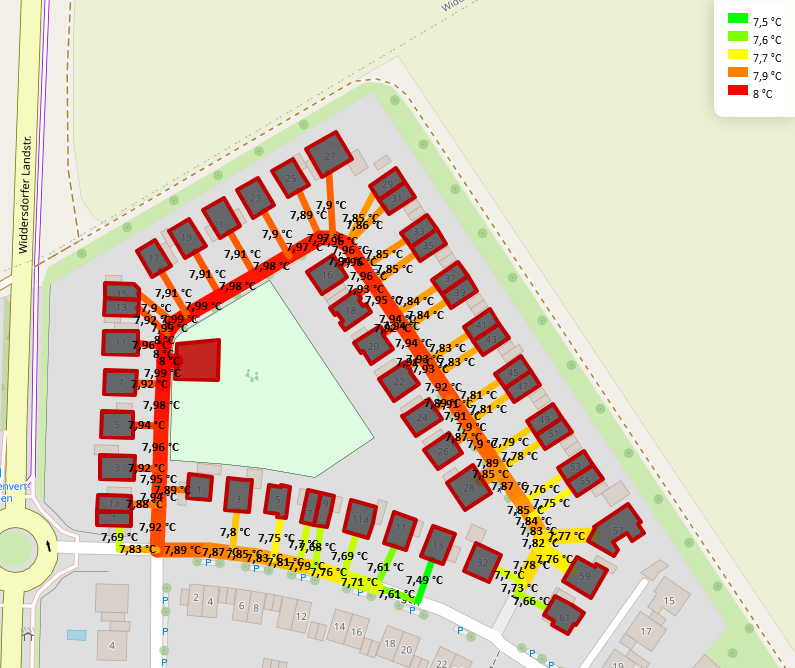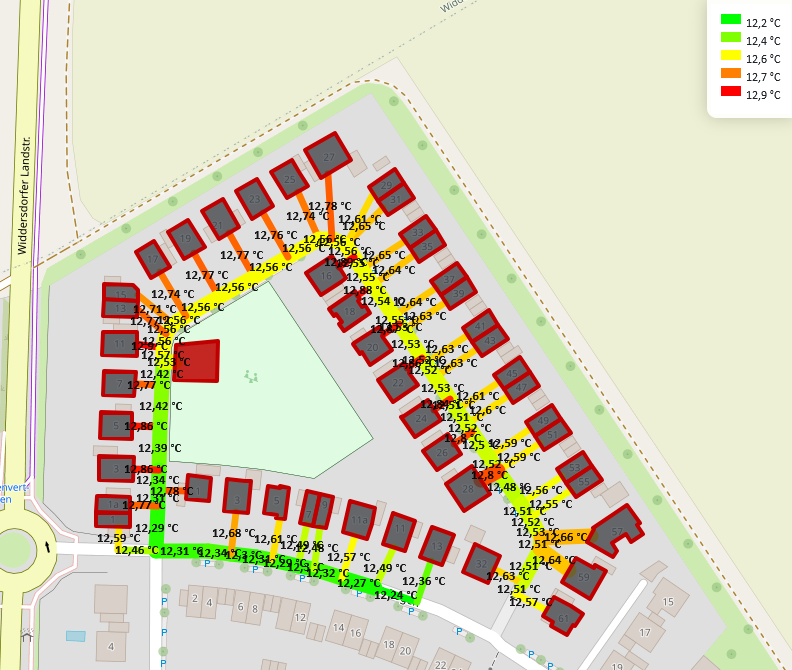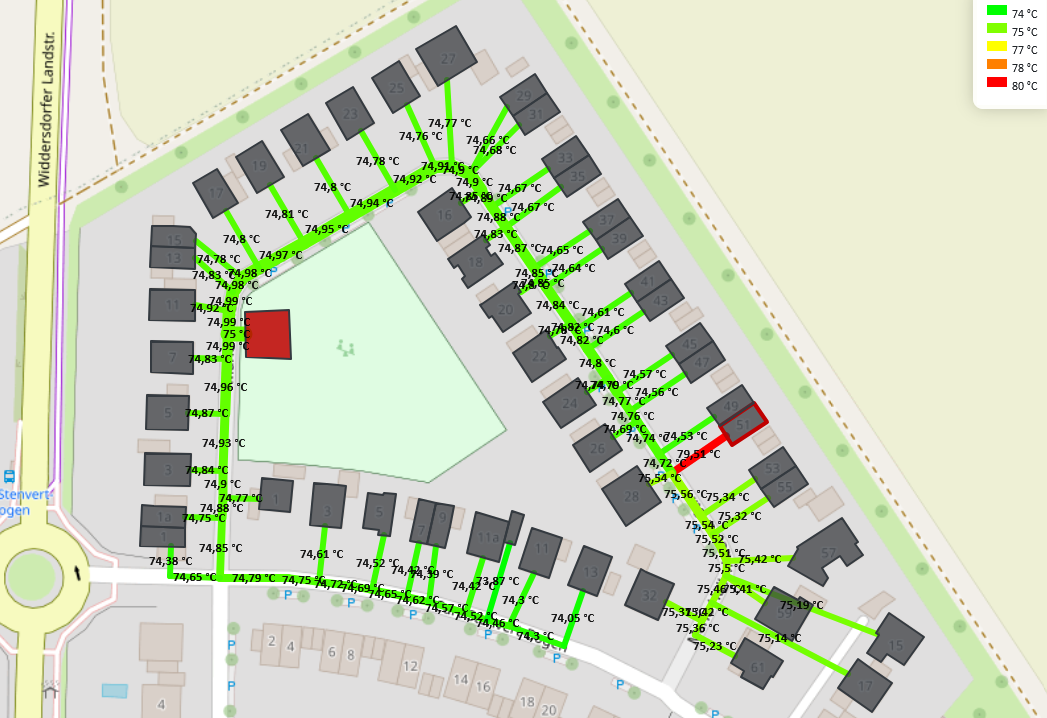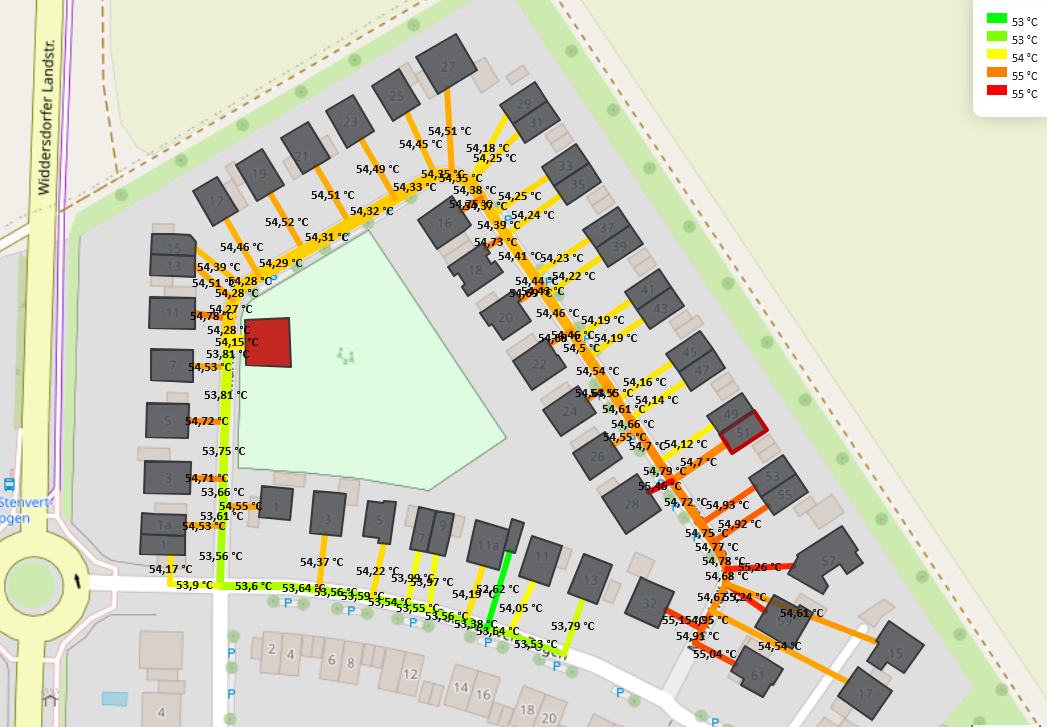Calculation of network temperatures in nPro
To calculate the supply and return temperatures in heating networks, nPro uses an approach based on a system of equations for every node of the network. This approach has the advantage that also prosumer buildings with decentral heat feed-in can be considered.
How are supply and return temperatures calculated in nPro?
With the nPro software, the supply and return temperatures considering prosumer buildings can be calculated. For more information about prosumers and heat feed-in types in nPro, refer to the related article. nPro uses a system of equations, where the result represents the outlet temperatures of each node for both supply and return. First, the volumetric flow and its direction for each pipe at a given time (the maximum load scenario at the energy center) must be calculated. Based on these values, an energy balance equation for volumetric flows and temperatures is established for each node. These equations are set up considering temperature losses in the pipes. The supply temperature from the energy center and the temperature differences between supply and return across buildings are included as additional boundary conditions in the system of equations. Solving the system of equations yields the corresponding outlet temperatures for each node and each pipe section.
Example temperature profiles
Injection from supply to return
Figures 1 and 2 show the temperature profiles of the supply and return pipes of a 5GDHC network with prosumers. This could represent a warm summer day where prosumer buildings inject waste heat into the network. The buildings can be passively cooled, and the waste heat is used for regenerating the heat source.


Injection from return to supply
Figures 3 and 4 show the temperature profiles of the supply and return pipes of a heating network with a prosumer. The prosumer could be, for example, a waste heat-generating business that injects its waste heat into the network. The heat demand at the energy center is reduced, and the temperature loss in the supply pipe can be compensated.


This might also interest you
nPro software
Plan your energy system with nPro!

 English
English
 Deutsch
Deutsch


